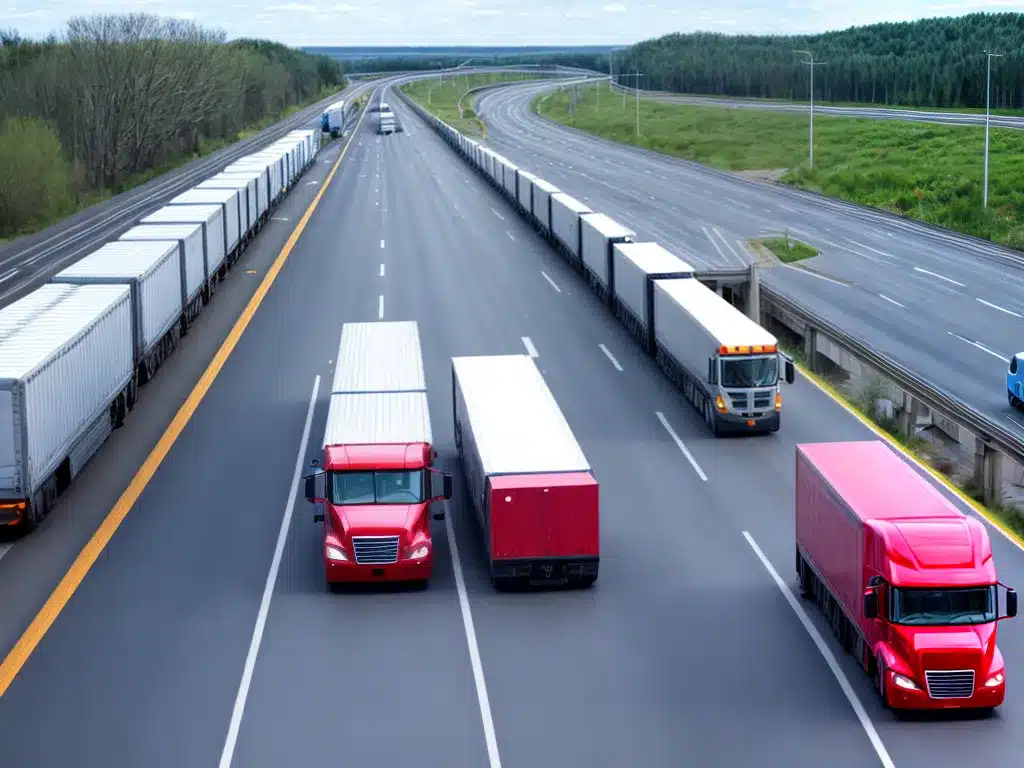
The Internet of Things (IoT) is transforming the transportation industry in many ways. IoT refers to the growing network of connected devices and objects that are able to communicate and share data with each other. By integrating IoT into vehicles, infrastructure, and transportation operations, there are huge opportunities to increase efficiency, improve safety, and enable new technologies.
How IoT is Used in Transportation
There are several key areas where IoT is being applied in transportation:
Connected Vehicles
Connected vehicles are cars, trucks, and other vehicles that are equipped with internet connectivity and sensors. This allows them to communicate with each other (vehicle-to-vehicle or V2V communication), as well as with transportation infrastructure like traffic signals and signs (vehicle-to-infrastructure or V2I communication).
Some examples of connected vehicle technology include:
- Collision avoidance systems – warn drivers of potential crashes so they can take preventative action.
- Traffic information systems – provide real-time updates about congestion, accidents, and suggested alternate routes.
- Vehicle diagnostics – monitor engine performance and other metrics to notify drivers about maintenance needs.
Smart Infrastructure
Transportation infrastructure, such as roads, bridges, railways, and traffic systems are being upgraded with IoT sensors and connectivity. This makes them “smart” by collecting data and allowing two-way communication.
Some smart infrastructure examples:
- Connected traffic lights – use real-time traffic data to automatically adjust signal timing to improve flow.
- Structural health monitoring – sensors embedded in bridges and tunnels to constantly monitor safety and conditions.
- Smart parking – sensors and apps direct drivers to open parking spots reducing congestion.
Fleet Management
For companies that operate large fleets of vehicles, IoT provides ways to better track and optimize operations. Vehicle telematics transmit data back to dispatchers including location, speed, fuel usage, engine diagnostics, and driver behavior. This allows for improvements in route efficiency, preventative maintenance, and driver safety.
Logistics & Supply Chain Management
IoT sensors provide more visibility across supply chains. Logistics companies can precisely track the real-time location and condition of shipments from origin to destination. This improves delivery times, cargo security, and temperature/humidity monitoring of perishable loads.
Benefits of IoT in Transportation
Implementing IoT across transportation networks generates many advantages:
- Increased safety – collision avoidance systems and infrastructure sensors help decrease accident rates.
- Reduced congestion – smart infrastructure and connected vehicles improve traffic flow.
- Cost savings – fleet telematics and asset monitoring optimize fuel usage, maintenance, routes.
- Environmental benefits – reducing congestion and improving logistics efficiency results in lower emissions.
- New business models – IoT creates opportunities for transportation companies to develop innovative offerings.
- Enhanced traveler experience – real-time alerts about delays, parking availability, etc.
Challenges of IoT in Transportation
While the benefits are substantial, there are also key challenges to address:
- Privacy concerns – location and personal data must be kept secure.
- Technical issues – poor connectivity in rural areas, performance of sensors in harsh conditions.
- Interoperability – need for different vehicles, systems and networks to seamlessly communicate.
- Cost – infrastructure upgrades and new vehicle costs may be prohibitive for some organizations.
- Data management – securely storing and analyzing enormous amounts of data from sensors and devices.
Real World Examples of Transportation IoT
There are already many examples of IoT being deployed across the transportation sector:
Smart Highways
Several states including Wyoming, California, and Florida have tested smart highway systems with sensors embedded in pavement to monitor weather, traffic, and road conditions in real-time. The Colorado Department of Transportation has implemented a smart highway project that uses LiDAR sensors to update high-resolution 3D maps used for autonomous vehicle navigation.
Autonomous Trucking
Major truck makers like Daimler and Volvo are developing autonomous tractor trailers capable of platooning, where trucks wirelessly connect to travel closely together in convoys. This allows for semi-autonomous driving on highways to improve fuel efficiency and safety.
UPS Fleet Management
Logistics giant UPS manages over 100,000 delivery vehicles worldwide. Their On-Road Integrated Optimization and Navigation (ORION) system uses IoT telematics and advanced algorithms to optimize routing and minimize mileage for each truck. This has saved UPS up to 8.4 million gallons of fuel annually.
Singapore Smart Nation
Singapore launched the Smart Nation initiative in 2014 with plans to deploy sensors and connectivity across the city-state. Transportation projects include sensors on taxis to map real-time traffic patterns, an intelligent traffic management system to ease congestion, and developing an autonomous vehicle ecosystem.
The Future of IoT in Transportation
The transportation industry is only beginning to realize the potential of IoT. As vehicles, infrastructure, and operations become more interconnected and intelligent, we will continue moving towards the vision of smart cities with integrated mobility systems and self-driving cars. However, cybersecurity and privacy will be critical concerns. Overall, embracing IoT is key for transportation companies to improve safety, efficiency, and their competitive edge. Exciting innovations in this space will emerge over the next decade and beyond.












